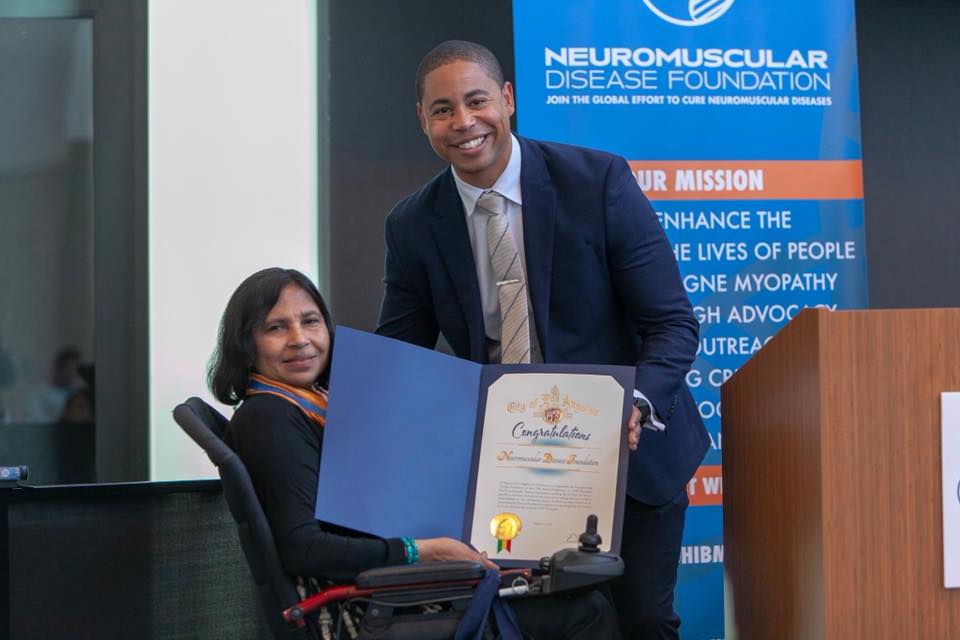
(This is a review from one of my previous posts just to have a little background into understanding my new post).
At a point in this production cycle we get a substance (substrate) called ManNAc which is changed to to ManNAc-6 (this means a phosphate molecule is added), later along this cycle it then changes to sialic acid. Because there is less sialic acid available for the muscles they get weaker and we get HIBM."
Hereditary Inclusion Body Myopathy (HIBM) is known by many other names such as Nonaka Myopathy, Distal Myopathy with Rimmed Vacuoles (DMRV), IBM2, GNE Myopathy and some others. Researchers have found over 60 different mutuations in the GNE gene which result in HIBM. They may continue to find more mutuations as patients get tested.
There are clusters of mutations within ethnic groups and we know that HIBM is more prevalent within the Persian Jewish community. There are other groups found in Japan, India and the Middle East. Most of these groups carry different mutations. In my family, researchers found a "novel" (new) mutation that was not previously mentioned in medical journals.
As with any disease and especially with hereditary diseases it is important to get genetic counseling. I know most of my friends and family with an HIBM diagnosis have had counseling with geneticists or doctors. In my case, I have 2 different mutations, one inherited from each of my parent and both of my mutations occur on the kinase domain of the GNE gene.
On the GNE gene there are two protein sections which are known as domains. One is called the kinase domain and the other is epimerase. Mutations on the GNE gene occur either on the kinase domain and or the epimerase domain. It is reported in medical literature that the kinase domain consists 722 amino acids and the Epimerase has 753 amino acids.
My mutations were explained to me by a doctor this way:
Imagine the GNE gene like a ruler with 12 inches and for each inch there is a line dividing the ruler in 12 parts which are called "exons". In between the exons are introns. The exons are in charge for the coding of the amino acids in the protein. One of my mutations occurs between th 9th and 10th exon and the other occurs on the 12th exon. ( Consult your GNE sequencing report and you may see some information similiar to this).
_____________________________________________________________________________
1 2 3 4 5 6 7 8 9 10 11 12
Epimerase domain Kinase domain
I have not encountered any medical articles where it mentions whether ManNAc or Sialic Acid would be more effective for a kinase or epimerase mutation
Some terminology that are used when we talk about HIBM
Exons are segments of dna that carry the codes for proteins.
Amino acids are small parts of a protein that are linked together to form a protein.
Protein are complex organic compounds that are made up of simpler compounds that attach to each and are called amino acids
Enzymes are proteins - GNE is a Bi-functional enzyme = It carries out a 2 step process in the making of sialic acid. Enzymes can speed up chemical reactions in the body, change a protein or slow down a process.
*Note: I have read and compiled the above information from these sites listed below. I have also used my GNE sequencing information.
http://glycob.oxfordjournals.org/content/20/3/322.full
http://www.elmhurst.edu/~chm/vchembook/570enzymes.html
http://www.bbc.co.uk/schools/gcsebitesize/science/add_aqa_pre_2011/enzymes/enzymes1.shtml
http://dwb4.unl.edu/Chem/CHEM869P/CHEM869PLinks/www.bact.wisc.edu/microtextbook/metabolism/Enzymes.html
Image copied from :http://www.nigms.nih.gov/Education/Factsheet_Genes.htm


